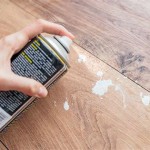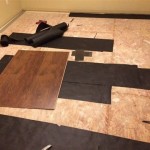How Flat Does a Floor Need To Be for Tile?
Installing tile flooring can dramatically enhance the aesthetic appeal and functionality of a space. However, the success of a tile installation hinges significantly on the flatness of the subfloor. Deviations from a level plane can lead to a multitude of problems, impacting not only the visual appearance but also the long-term durability and performance of the tiled surface. Understanding the acceptable flatness tolerances and the procedures for achieving them is crucial for both professional installers and homeowners undertaking DIY projects.
The term "flatness" in the context of flooring refers to the degree to which a surface deviates from a perfectly level plane. This is typically measured using tools such as a straightedge, level, or laser level. While perfectly level is often the ideal, achieving absolute flatness is often impractical and unnecessary. Instead, industry standards dictate acceptable tolerances that account for minor variations while ensuring a stable and aesthetically pleasing tiled surface. These standards vary slightly depending on the type of tile being installed, the size of the tile, and the specific application.
Understanding Flatness Tolerances for Tile Installation
Flatness tolerances are commonly expressed as a maximum allowable deviation over a specified distance. This is often stated as a fraction of an inch over a length of feet. For instance, a common standard for ceramic and porcelain tile is 1/4 inch over 10 feet, or 1/8 inch over 6 feet. This means that if a straightedge or level is placed on the subfloor over a 10-foot span, the maximum gap between the straightedge and the subfloor should not exceed 1/4 inch. Similarly, over a 6-foot span, the gap should not exceed 1/8 inch.
These tolerances are not arbitrary; they are based on the characteristics of tile and the limitations of installation materials. When a subfloor is significantly out of level, the tile installer must compensate for these variations using mortar. Excessive mortar thickness can lead to several issues, including uneven drying, increased risk of cracking, and difficulty in achieving a consistent grout line. Furthermore, uneven mortar beds can create stress points on the tiles, making them more susceptible to cracking or breaking under load.
Larger tiles generally require a flatter subfloor than smaller tiles. This is because larger tiles are more rigid and less able to conform to minor variations in the subfloor. Unevenness in the subfloor will be more noticeable with larger tiles, resulting in lippage, which is the condition where one tile edge is higher than the adjacent tile edge. Lippage not only detracts from the aesthetic appeal but also poses a tripping hazard.
Different types of flooring materials have different requirements for flatness. For example, natural stone tiles, such as marble or granite, often require a flatter subfloor than ceramic or porcelain tiles. This is because natural stone tiles are often more susceptible to cracking or chipping if they are not properly supported. Additionally, some types of tile, such as rectified tile (tiles that have been precisely cut to uniform dimensions), require a very flat subfloor to prevent lippage.
Consequences of Installing Tile on an Un-Flat Subfloor
Ignoring flatness requirements can lead to a cascade of problems, ranging from cosmetic imperfections to structural failures. The most immediate and noticeable consequence is often an uneven tiled surface. This manifests as lippage, where the edges of adjacent tiles are misaligned, creating a visually unappealing and potentially hazardous surface. Lippage is not only unsightly but also increases the risk of tripping and falls.
Another significant consequence is the increased risk of tile cracking. When tiles are installed on an uneven subfloor, they are subjected to uneven stress distribution. This stress can concentrate at specific points, making the tiles more vulnerable to cracking under normal loads or impacts. Cracks not only compromise the aesthetic appearance but also create pathways for moisture to penetrate the subfloor, potentially leading to mold growth and structural damage.
Grout lines can also be significantly affected by an un-flat subfloor. Achieving consistent grout lines becomes challenging when the underlying surface is uneven. Varying grout line widths can detract from the overall aesthetic appeal. Moreover, wide grout lines are more prone to cracking and staining, requiring more frequent maintenance and potentially shortening the lifespan of the tiled surface.
Adhesion issues also arise when excessive mortar is used to compensate for an uneven subfloor. Thick mortar beds take longer to cure and are more prone to shrinking. This shrinkage can weaken the bond between the tile and the subfloor, leading to loose tiles or even complete detachment. Loose tiles not only pose a safety hazard but also create opportunities for moisture intrusion.
Methods for Achieving a Flat Subfloor Before Tile Installation
Several methods can be employed to correct imperfections in a subfloor and achieve the required flatness for tile installation. The choice of method depends on the type of subfloor, the severity of the unevenness, and the budget for the project. For concrete subfloors, self-leveling compounds are a common and effective solution. These compounds are pourable mixtures that flow freely and automatically level themselves, filling in low spots and creating a smooth, flat surface. It is crucial to follow the manufacturer's instructions carefully when using self-leveling compounds to ensure proper mixing and application.
For wood subfloors, the process often involves reinforcing the existing structure and addressing any sagging or deflection. This may include adding additional joists, shimming existing joists, or replacing damaged sections of the subfloor. Once the structural integrity is ensured, plywood or cement board underlayment can be installed to provide a stable and flat surface for tiling. Cement board is particularly recommended for wet areas, such as bathrooms and kitchens, as it is water-resistant and provides a strong bond for the tile.
Grinding down high spots is another technique used to achieve a flat subfloor, particularly for concrete surfaces. This involves using a concrete grinder with diamond grinding wheels to remove excess material and level the surface. Grinding can be a dusty process, so it is important to wear appropriate respiratory protection and use dust control measures. After grinding, the surface should be thoroughly cleaned to remove any remaining dust or debris.
In some cases, a combination of methods may be necessary to achieve the desired flatness. For instance, large dips can be filled with patching compounds before applying a self-leveling compound. Similarly, shimming can be used to level out minor imperfections in a wood subfloor before installing underlayment. It is essential to carefully assess the condition of the subfloor and choose the most appropriate methods for addressing any unevenness.
Regardless of the method used, thorough preparation is key to achieving a flat subfloor. This includes cleaning the surface to remove any dirt, dust, or debris. Any loose or damaged materials should be removed and repaired. Priming the subfloor can also improve adhesion and prevent moisture from being absorbed into the substrate. Taking the time to properly prepare the subfloor will significantly improve the chances of a successful tile installation.
.jpg?strip=all)
Is Your Floor Or Wall Flat Enough For Large Format Tile

Critical Points Of Ceramic Tile Design And Installation Mortar Bed Mud Floors Walls Floor Trends

If The Floor Is Not Flat Fix It Trends Installation

Is Your Floor Or Wall Flat Enough For Large Format Tiles

Technical Focus Achieving A Flat Floor For Tile And Stone S 2024 06 14 Trends Installation

Is Your Floor Or Wall Flat Enough For Large Format Tiles

How To Prep Floors For Tile Make It Flat
Working With Self Leveling Floor Underlayments Jlc

Astm F 710 Does The Subfloor Need To Be That Flat Floor Consult

Subfloor For Tile Installation Everything You Need To Know
See Also







